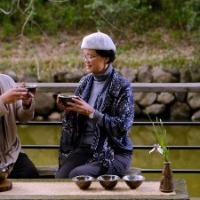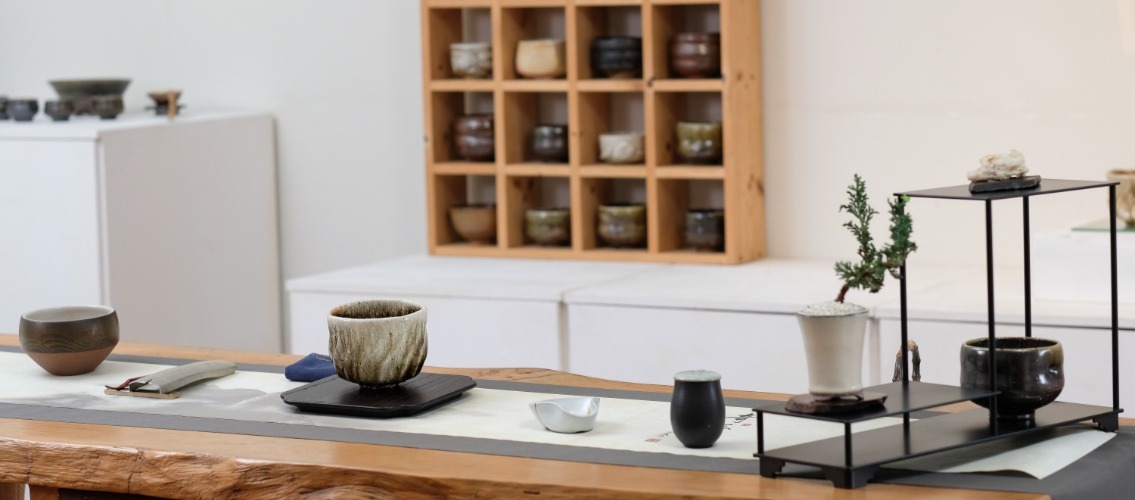
Words from the Curator
Taiwan is home to magnificent mountains, clean water, and delicious tea.
It is also where skilled ceramists call home.
The chawan, or tea bowl, is a vessel with a simple shape. There are tens of thousands of ceramic artists in the world, and for them, making a bowl is quite trivial. However, for the artist of a chawan to be immediately identifiable from looking at the bowl is no easy task.
There are quite a few ceramic artists who make chawans in Taiwan and there are no shortage of groups of ceramic lovers who like chawans so much that they collect and use them. But drinking tea with chawans has not yet become a trend in Taiwan, preventing it from becoming a cultural style. Compared to using the traditional teapot, a relatively smaller crowd of people drink tea with the bowl. Although they make chawans themselves, some ceramic artists either don't use the chawan for drinking tea, or have not put much thought into how to drink tea. These artists only focus on the texture of the clay, the aesthetics of the design, and the special characteristics of the glaze and fire. Some of those who buy the chawan only do so to admire the shape and the glaze. They buy chawans by the masters to collect or exhibit, and prefer not to use it. What's more, most people believe in the stereotype that chawans can only be used for Japanese macha.
A question that many people who have not seen the chawan have: how can I drink from such a big bowl? Or they'd ask: Can the chawan be only used for tea? Can I eat rice with it? Can I put soup in it? Can I use it as a trash can? And the answer is: There is no right answer! Once you have digested this book, you can formulate your own answer. A cultural style and vessel use take time The public needs to build it up slowly. This time only proposes a starting point with "Use a great chawan to drink great Taiwanese tea." The Taiwanese can drink tea with its own cultural style! Well then what is culture? We could be here all day discussing this definition. The purpose of this book is not to give definitions, but to do our best in creating new elements of culture and accumulate it. We hope that through the power of publication, more people can appreciate the artist's chawans, use chawans to drink tea, and, in turn, stimulate more discussions and perspectives. In this way, the form of the vessel and its use can become more diverse and more distinct. We hope that this will initiate a trend for Taiwan chawan tea ceremony in thought and in culture.
With the bowl in your palm, feel the presence of the tea and the mass of the bowl. All disordered thoughts can be let go. This moment belongs to one person, one tea, one vessel, one world. One chawan brings a comprehensive experience of the senses. The feelings of the moment transcend space and time. One is all.
Drinking tea with a chawan in your bare hands is the most straightforward, natural way. The emotional impact a bowl of tea emanates in your palm is a direct sensation of the moment that is beyond any words. From enjoying the tranquility alone to the group meditation of a tea ceremony, drinking tea from a bowl can condense sweet drops of dew from the heart of the Taiwanese. We encourage Taiwanese people to drink the quality tea of Taiwan with quality bowls by artists. The professional artists demonstrate a beauty condensed from lifetime of focused work. Seeing such beauty is to experience the spirit, heart, and creativity. The bowl, leaf, and liquid in your hands is the herbal essence of the mountains and the waters. The tea ceremony demonstrates the goodness of the Taiwanese people and their lifestyle aesthetics to share with the world.
I am very glad that a total of 73 artists from 18 different countries will be participating and showing off their work. Additionally, the demonstration of the Taiwanese chawan tea ceremonies corresponding to the seasons, the craft exhibitions, art performances, and cultural travel will fully showcase the confidence, receptiveness, and passion of the Taiwanese people.
I hope that this can stir the interest in the Taiwanese people to drink quality tea with a quality bowl, and inspire a new culture.
鄧淑慧Deng Shu-Hui 2019.
ONE IS ALL

